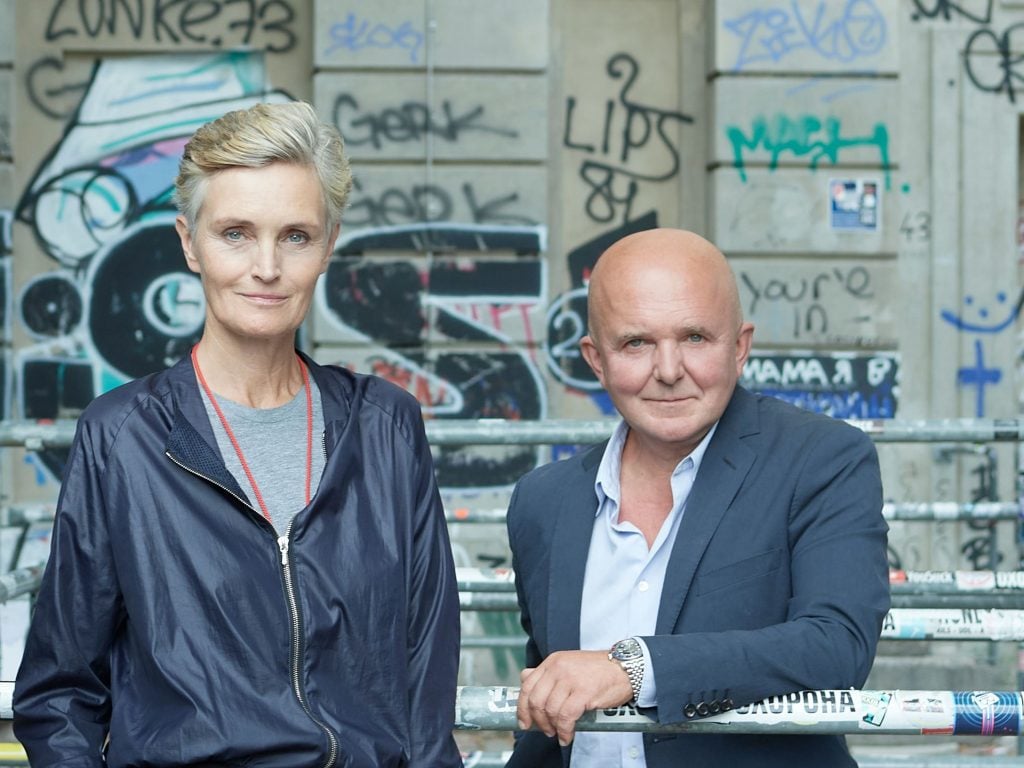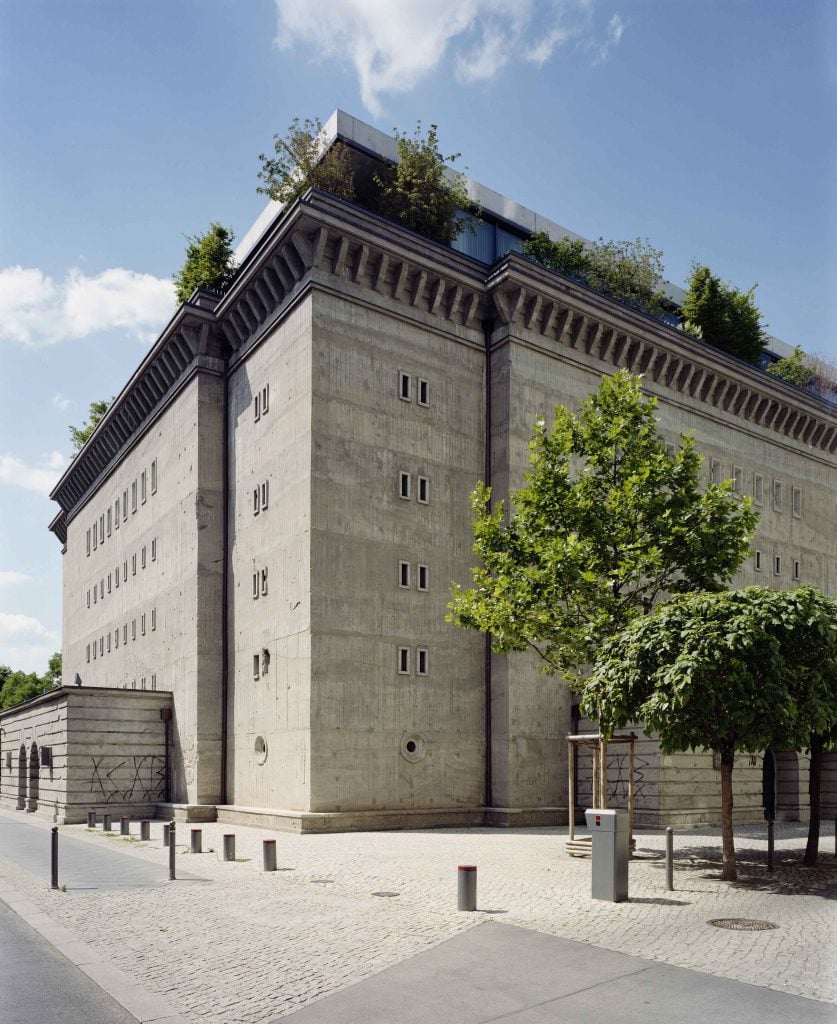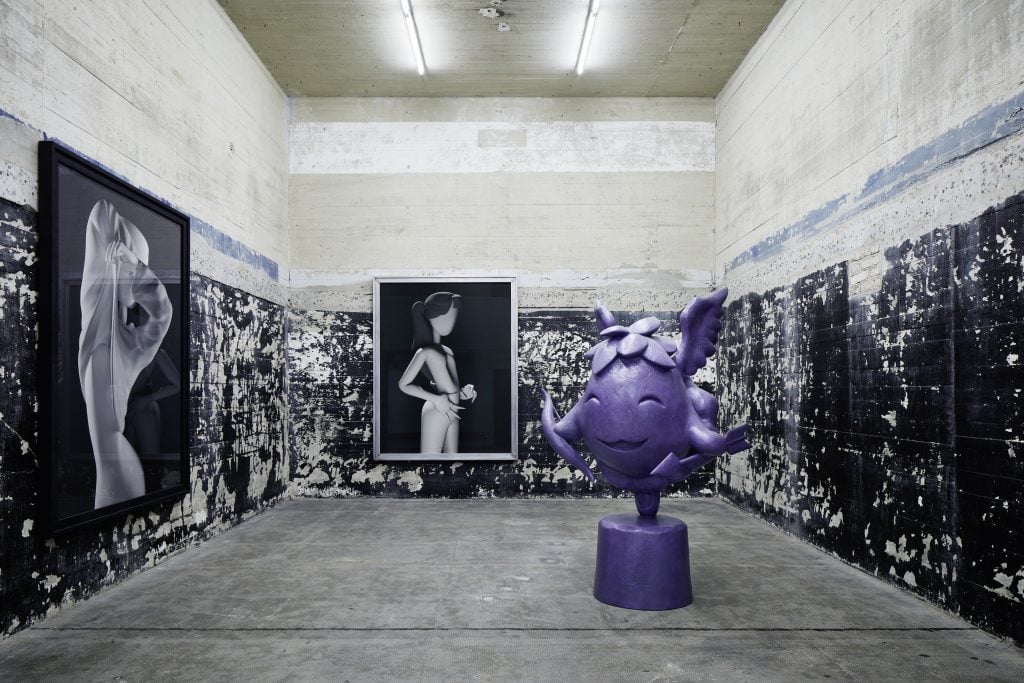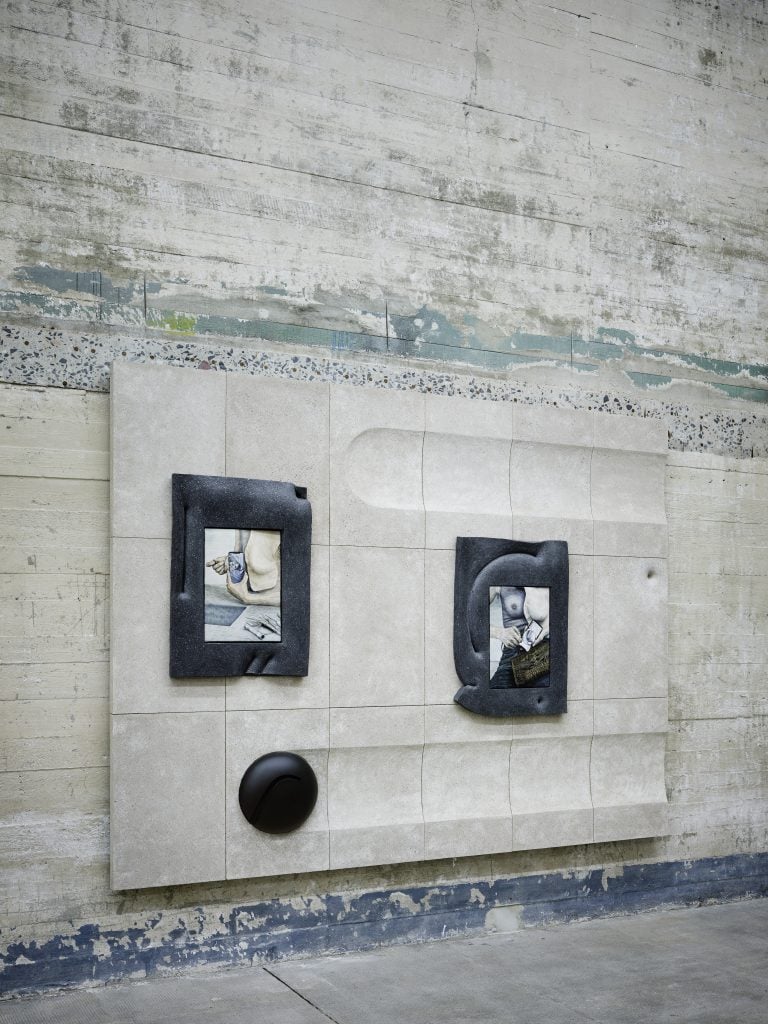Art Collectors
Collectors Christian and Karen Boros on the Thrill—and Urgency—of Supporting Emerging Artists
The couple has been awarded the annual prize from Art Cologne, which opens to VIPs and the public this week.

When Cate Blanchett was doing site visits around Berlin as she prepared for her on-screen role as Lydia Tár, she knew she had arrived at the right place when she visited the residence of Christian and Karen Boros, a collector duo whose apartment is stacked atop a wartime bunker in the former East.
Indeed, the building and the Boros residence exude quiet power. The modern penthouse is bold, opulent, masculine, and an intelligent juxtaposition of modernity and history, which is so evocative of Berlin. “She told us it was the only house she could imagine [the character of] Lydia living in,” Karen told me. The couple agreed to hand over the keys to the producers of Tár and move out for a time.
That may have been the first time a wide public was able to see their private abode but in the floors beneath, the public is welcome year-round and will find a formidable presentation of the Boros’ art collection. The exhibition space itself offers plenty to look at: The exterior walls have shrapnel pockmarks from the battle of Berlin; interior concrete rooms have traces of graffiti in places that stem from the years in which the building was a site for raves.
Currently, works by 27 artists are laid out throughout the bunker’s circuitous rooms. On view since 2022 (until 2026), their fourth presentation is like those before it, a pulse-taking assortment of contemporary art fresh out of the studio. In one room you will find large portraits and sculptures by Bunny Rogers referencing bygone gaming personae that are particular yet universal. In another part of the bunker, the sounds from Eliza Douglas and Anne Imhof’s work Bell reverberate against the concrete.

Boros Collection, Berlin © NOSHE
Visitors can join guided tours to experience these works and the bunker’s reputation draws in a wide-ranging public with varying levels of art world knowledge. “What started out of necessity due to the fact people cannot walk through the bunker themselves, developed into a quite intense mediation process,” said Karen. “People that come here have to take one and a half hours of their time and let the experience happen.”
The outreach that the Boros keep at the heart of the collecting reached a new urgency during lockdown when they partnered with the famous techno club Berghain to put Berlin art on view. This kind of mediation work is part of what garnered the Boros this year’s Art Cologne prize, an annual award given by the Federal Association of German Galleries and Art Dealers and Koelnmesse, the parent company of Art Cologne. The fair opens this week in the West German city on the Rhine.
When I spoke with Karen and Christian, they had been hopping around institutions and museums in Greece. Their calendar this fall included stopovers in London for Frieze Week and in Paris for Art Basel Paris, where they acquired work by Paris-based painter Pol Taburet.
“I was very impressed by the installation of Mire Lee in the Turbine Hall at Tate Modern, London,” said Christian. “My reaction was both fascination, and provocation combined with a strange gut feeling. Especially Mire’s moving sculptures evoke something very human: living and decaying material that seems to be taken from the body.”
Recently, the couple bought work from Berlin-based artist Sung Tieu from East Germany, a child of Vietnamese immigrants, whose work considers overlooked German history. At Art Basel in June, they also bought work from Oliver Bak, who recently joined Sprüth Magers’ roster.
The works they buy may not be by artists who are household names—yet. “We try to pick up on topics that artists work with that are current and a reflection of our times now,” said Karen. As such, they favor fresh-to-market works that are under a year old, often avoiding secondary auctions.

Anna Uddenberg. Boros Collection, Berlin © NOSHE
“It’s not a collection of consensus,” added Karen. “When we started to do this together, we decided to give one another space to decide for themselves. If I burn for an artist very strongly and believe in them, then Christian says, ‘Okay, you have to follow that,’ and vice versa. But we always discuss it.” The first works by Imhof were something that Karen had felt strongly about, and Christian less so. “He had to grow into it and later on we bought pieces together.”
Since opening in 2008 (they bought the bunker in 2003), exhibitions have rotated every four years, reflecting their developing tastes and recent purchases. The collection began in the 1990s. Around that time, Christian met with Jay Jopling, founder of White Cube, and they went out drinking. Jopling invited him to visit the studio of young YBA artist Damien Hirst, and ended up buying a few works. He also met and acquired work from then-burgeoning talents like Tracey Emin and Sarah Lucas.
By now, the collection is also, in part, a survey of artistic production from Berlin as their support for the German capital’s gallery scene is deep. They were early champions of outfits like Neugerreimschneider and Max Hetzler, both of which opened spaces in the city in the mid 1990s. Berlin remains a continuous source of discovery and inspiration for the couple, who cite a new generation of galleries, from Chert Lüdde to even younger ones including Sweetwater, Molitor, and Heidi.
“We have a network of galleries we strongly believe in and support,” said Karen, adding that they are also frequently buying from galleries at fairs. “We know the galleries we support tend to hold good works for the fairs, so we often go there and plan not to buy, but then end up buying something.”

Bunny Rogers. Boros Collection, Berlin © NOSHE
“Berlin is still very exciting, even though people sometimes make it out like the changes here have been negative. The galleries are doing amazing work and have a strong standing internationally and are globally connected,” noted Karen. “Of course, you always look back on decisions and wonder why you didn’t realize or see something at the time. There are always gaps and the mistakes are part of the collection. The collection is also defined by the missing pieces that we did not buy.”
The downturn in the market has been positive for collectors like the Boros who cherish the slowdown. “The time when collectors only heard a name and then bought a piece without really looking at it, that is kind of over,” noted Karen. “For those of us who have been doing this for 30 years, this is only, in a way, a healthy direction. Some of the people who invest in art and sell again have quietened down, This gives us more time to think about the work we are considering buying.”
She noted that, as per UBS and Art Basel’s art market report, collectors are still buying work by young and emerging artists. “Three or four years ago, you might start with $20,000 to $30,000 per work and then a year or so later it would be double. That won’t happen so easily anymore,” she said, adding that, in any case “quality is still being asked for.” However, she noted that because prices are not rising quite as quickly as they used to, this may further squeeze galleries’ margins as shipping and fair costs have become more expensive. “The cost efficiencies in running a gallery are being challenged,” she said.

Klára Hosnedlová. Boros Collection, Berlin © NOSHE
In spite of this deep focus on contemporary and fresh work from the studio, there are some historical outliers in their penthouse home, including a few pieces of medieval art and works by Louise Bourgeois and Jenny Holzer. At their country home outside of Berlin are some works that do not fit in the bunker conceptually or logistically, like Olafur Eliasson’s Your Spiral View (2002), a large silver walk-through tunnel.
The duo are mulling what is to come for the next exhibition cycle at the Boros in 2026. “The challenge is to determine when we can show some of the pieces that we have already shown, and where and how we can reactivate them,” Karen said. “It will be an interesting point for us, when we start to show artists like Michael Sailstorfer, Michel Majerus, Eliasson, and bring them into context with a younger generation of artists we have acquired.”
As they continue to cement their legacy within the European art world, I asked Christian what he would advise young collectors starting out. “Sleep on it for a night before buying a work of art and never let yourself be rushed into making a spontaneous decision,” he said. “Will the enthusiasm and magic last the day after? You should also buy works that irritate, provoke, and disturb. Beautiful art that appeals quickly bores. Art that remains relevant after a long time was always disruptive in its time.”





